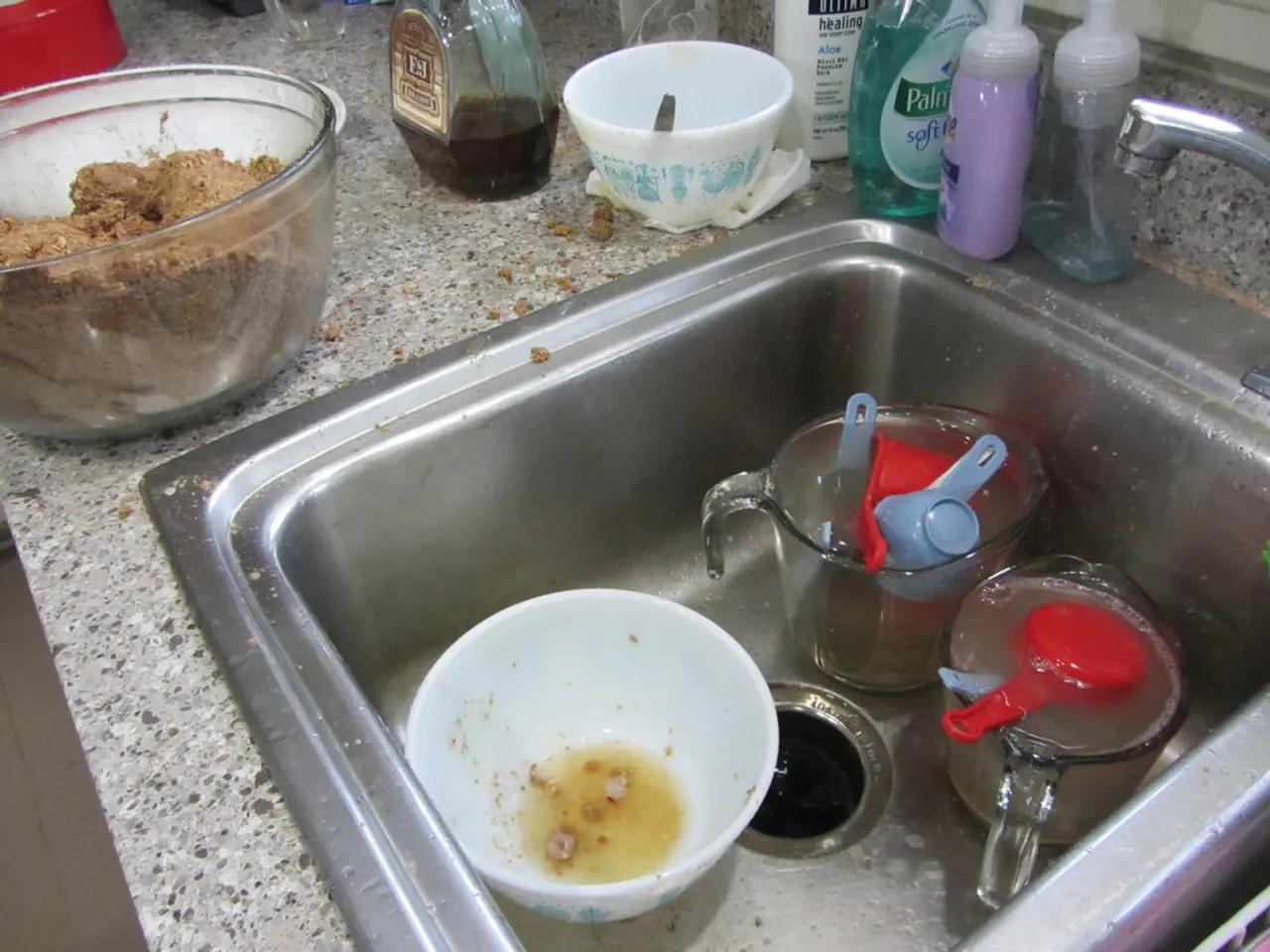Kitchen Contents: Plastic Materials
In a concerning revelation, research has shown that a significant number of black plastic kitchenware items contain harmful chemicals, posing potential health risks to consumers, particularly children.
Black plastic, commonly used to create the black colour in plastic products, contains compounds with carcinogenic properties. This includes brominated flame retardants (BFRs) and decaBDE, which are often found in excess of safety limits. These toxic chemicals originate from the recycling of electronic waste, where plastics from devices like TVs and computers are repurposed into kitchen utensils and other household items.
The main health risks associated with these chemicals include cancer, endocrine disruption, neurotoxicity, infertility, and developmental harm, especially in children. Exposure to these chemicals can affect brain and reproductive system development in children, and they can be ingested through contaminated food, house dust, and even breast milk.
To minimise exposure, experts recommend avoiding black plastic kitchenware, especially for heating food, and instead opting for safer alternatives like glass or stainless steel. Using wood or stainless-steel utensils can also help limit exposure to plastics in the kitchen.
Plastic chopping boards can shed tiny fragments of varying shapes and sizes that can be ingested. E-waste can contain heavy metals such as cadmium, lead, nickel, chromium, and mercury. Exposure to heat during cooking increases the danger of contamination from black plastics.
In a 2024 study, high levels of cancer-causing, hormone-disrupting flame-retardant chemicals were found in a variety of household products made with black plastics. The International Agency for Research on Cancer classifies carbon black, a substance used to create black color in plastic, as "possibly carcinogenic to humans."
Microplastics are also a concern, as they are found in food and drinks, and commonly enter our bodies through fish and shellfish. Black plastic toys can be dangerous for children as they may expose them to chemicals. A 2018 University of Plymouth study found toxic chemicals at up to 30 times the safe levels in 40% of black plastic toys, thermoses, cocktail stirrers, and utensils.
In light of these findings, it is advisable to avoid microwaving food in black plastic (and all plastics) and single-use hot cups with black plastic sippy lids. Bring your own metal or ceramic mug instead. Using wooden chopping boards, glass, ceramic, or metal storage containers can also help reduce exposure.
The studies highlight significant flaws in current recycling practices and call for stricter regulations to prevent toxic electronic waste contaminants from entering consumer products. By making informed choices about the kitchenware we use, we can take a step towards protecting our health and the health of our families.
- The health risks associated with black plastic, often found in kitchenware, include cancer, endocrine disruption, neurotoxicity, infertility, and developmental harm, particularly in children, due to the presence of harmful chemicals like brominated flame retardants (BFRs) and decaBDE.
- Environmental-science research has shown that plastics, originally from electronic waste, can find their way into various household items, such as kitchenware, causing potential health concerns.
- To promote health-and-wellness and limit exposure to potentially toxic chemicals, experts suggest using safer alternatives like glass or stainless steel for cooking and storing food, as well as using wood or stainless-steel utensils in the kitchen.




